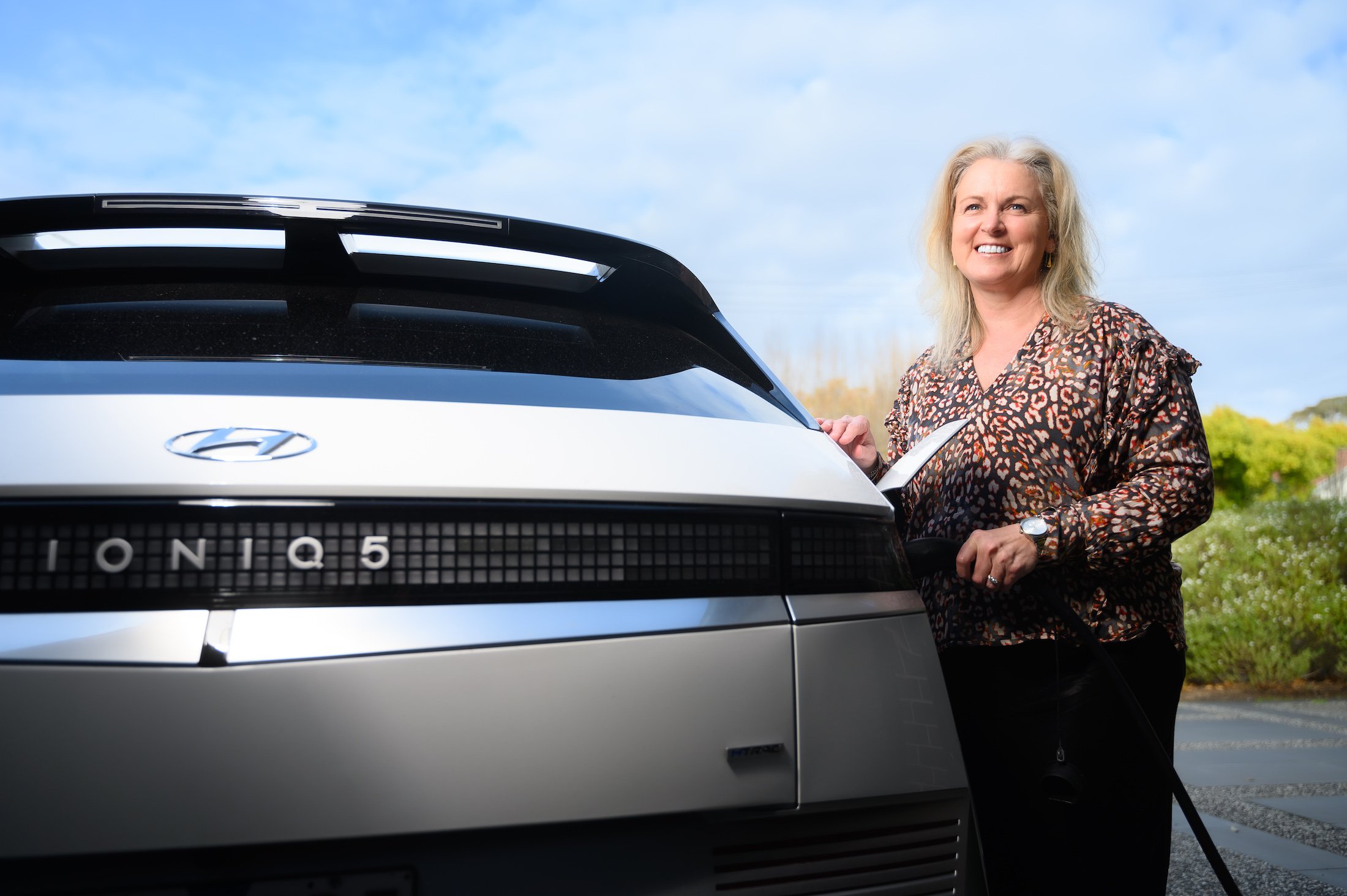Cheryl’s Story
Cheryl has a Bachelor of Science degree, a background in hospitality and works in the family’s occupational health and safety business. She lives in Ashburton with her husband, two sons (18 and 20) and a rescued German Shepherd called Bud.
Learning along the way
Ten years ago, Cheryl and her husband Cameron purchased a falling down old weatherboard house and replaced it with a single level, three-bedroom, two-bathroom brick home.
"We were committed to making a positive ecological impact. Instead of splurging on lavish house additions, we directed our funds towards enhancing environmental aspects and efficiencies. Our house's design maximises northern light, ventilation, and utilities," Cheryl explains.
The couple oriented the living area to the north, put in rainwater tanks, tiled floors, double glazed windows, longer eaves to provide shade on hot days, a “very efficient” reverse cycle air conditioner and 3-phase power so they could “adapt to modern day appliances further down the track.”
They also installed a solar gas hot water heater and recycled the existing solar panels but added more to create an 8.1kW solar system.

Cheryl says not everything they did up front has stood the test of time.
“Being in hospitality, I've always cooked with gas so when I designed the kitchen, I put in a gas stovetop. But during lockdown, the boys used a carbon dioxide monitor from our business to measure fresh air at home and we realised there was carbon dioxide in the house. They said ‘Mum, why have we got a gas stovetop?’ It was their drive that got us thinking we need to get that out of the house.
We set a list of things we would do and one of them was change the stove to induction. It takes a little while, but I’ve got used to it. The induction heats very quickly and it’s even cooking.”
Electrification wish list
“We want to put some ceiling fans in the bedrooms and replace the gas booster with an electric booster for the solar hot water.
One of our wish list items was to get an electric car. We went in a ballot and got a Hyundai IONIQ 5. We were driving a diesel Land Cruiser which was costing us nearly $10,000 a year and because we had 3-phase power, we put an EV charger in the garage.
During the summer it costs about 75 cents a day to run. Winter is a different story and when we are out, we tend to pay for the charge. We also got an electric scooter and an ebike. The boys still drive a VW Golf, but overall, we have reduced our transport costs by 85%.”

What’s it like living in an energy efficient house?
“It's much cheaper to run. Love it! I have noticed a big difference on hot days and cold days. On a hot day, the house stays cool. We get more days where we don't use the air conditioner or heater because the house stays at a liveable 18C or 19C.
One of the other things I love about the house is I've got to know my appliances. I program them to turn on during the day when the sun is shining so we are using solar. It's just learning about your appliances to understand - How efficient are they? Do they have ECO mode? When is the cheapest time of day to run them?”
What advice would you give to other homeowners?
“Create a list of things you could change and then prioritise it. You’ve just got to step out of that comfort zone and do a little bit at a time.”
A note about 3-phase power
Most homes and apartments have single phase power. Three phase power is used for larger homes or commercial and industrial settings that have higher electrify demands and more powerful appliances. If you are building, renovating, or upgrading your appliances, we recommend you talk with a qualified electrician about whether your current power supply is adequate.
